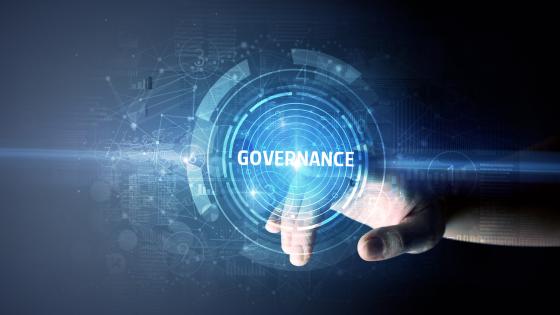At the G20 meeting last November, the world’s leading economies agreed to combat global recession with coordinated fiscal stimulus. Given the scale of the challenge – and the amount of money that will be used to address it – economic recovery efforts are monopolising national legislative agendas and promising to strain state coffers.
Policymakers are hoping to direct government spending in a way that not only generates short-term economic growth and employment, but also addresses long-term policy goals that have been sidelined by the current crisis (e.g. IPCC 2007).
Green fiscal stimulus
Energy and environmental objectives are chief among these and the notion of "green" stimulus has gained considerable traction in capitals around the world.
Japan and South Korea have both trumpeted their stimulus plans as “Green New Deals” and China has earmarked much of its $586 billion in spending for energy and environmental projects. The UK and Germany have followed suite and the US Congress is looking to green $50 to $100 billion of a proposed $825 billion package.
The G20 will meet again in April to compare notes on the recovery effort and take stock of each country’s plan of attack. Leaders will be looking to coordinate their respective stimulus packages to ensure the greatest economic bang for the buck.
Given that this same group of countries will be tackling climate change later in the year – either in a small grouping like the Major Economies Process, or through the UN-led negotiations in Copenhagen – they would be wise to assess the cumulative effect of these efforts on global carbon dioxide (CO2) emissions and work together to ensure that various “green” stimulus efforts compliment each other as well as long-term emission reduction goals.
What makes for a green recovery?
In a study from the Peterson Institute for International Economics, I propose a framework for evaluating both the economic and environmental effectiveness of “green” stimulus plans.
Economically, it’s a question of speed and scope; how quickly and how broadly the money is put to work.
Environmentally, it’s about strategic design.
Even the most aggressive government investment over the next two years will be a far cry from what’s needed to meet long-term climate change goals.
To be meaningful, green elements of a recovery package must be crafted in a way that complements, rather than replaces, future climate policy. There is range of stimulus programs that fit the bill, yielding both immediate economic results and sustained environmental benefits. The most promising fall into three categories.
Keeping clean energy momentum alive
The cost of climate policy down the road depends in large part on how fast low-carbon energy sources are developed today. In recent years high oil prices and government incentives have accelerated the deployment of wind, biomass, geothermal and solar, pushing down costs to with-in striking distance of coal and natural gas.
The credit crisis and collapsing oil prices threaten this momentum as project developers have difficulty raising capital and traditional tax incentives become less effective. Making existing policy incentives meaningful through loan guarantees or greater tax credit flexibility can help keep the renewable industry on track. The US installed 7,500 megawatts of wind power in 2008, reducing CO2 emissions by 3.5 million tons per year. Ensuring that this trend continues would save or create 170,000 more jobs than relying on existing fossil fuel sources for power generation. Yet, new incentives introduced to achieve this goal should be seen as a stop-gap measure only.
Ultimately market-based climate policies like a carbon tax or cap-and-trade will be more successful in meeting environmental targets than technology-specific government supports.
Laying the foundation for future low-carbon growth
After we emerge from the current crisis, the ability of market-based climate policy to move the global economy onto a low-carbon trajectory will depend on infrastructure. Here government will play an essential role, whether in building mass transit systems, regulating electrical grids or approving CO2 pipelines.
Many infrastructure investments can begin today as part of an economic recovery effort. Funding mass transit construction provides the most immediate economic benefit. In the US, $10 billion spent on rail and bus infrastructure would create 115,000 jobs. Building transmission lines or CO2 pipelines, if done well, is a slower process, but with significant environmental results. Upgrading existing electrical grids to give customers more ability to manage energy costs and utilities more ability to manage loads, scores well both on speed and environmental effect. These low-carbon investments must be balanced against non-green infrastructure projects that will certainly play a role in any stimulus package.
In the US, for example, spending $10 billion on road repair and construction more than cancels out the CO2 emission reductions achieved from a comparable investment in mass transit.
Picking efficiency, the low-hanging fruit
The most promising area for “green” stimulus spending, in terms of both economic and environmental benefit, is energy efficiency. Whether in government buildings, households or schools, there are a number of low-cost (or even profitable) opportunities to reduce CO2 emissions that will likely not respond to price-based climate tools alone.
Targeted government spending can address these market failures and complement future policy. In the US, spending $10 billion to retrofit government buildings would create 65,000 jobs. While this is comparable to other types of construction spending, efficiency projects have an added benefit. By reducing energy consumption by 90 trillion BTU a year, $10 billion spent on retrofitting federal buildings would save the government $1 billion each year through 2020.
Money borrowed today to finance stimulus spending will need to be repaid down the road and efficiency investments can help offset future costs. In addition, by reducing overall energy demand and thus energy prices, $10 billion spent on government retrofits would save the economy as a whole an additional $2 billion per year. Redirecting this money from energy purchases towards the normal basket of household purchases would create and sustain an additional 20,000 net jobs through 2020.
Tackling the economic and climate crisis together
Judging from progress made so far, many G20 countries will have included programs similar to those described above in their stimulus plans by the time their leaders arrive in London for the April 2nd summit. Taken together, these programs will help lay the groundwork for a more concerted international effort to address climate change.
The cumulative emission reductions resulting from “green” stimulus efforts directly will be modest, but highlighting a common commitment to emerge from our current economic morass on a more environmentally sustainable footing will help build confidence ahead of what promises to be challenging climate negotiations later this year.
This is particularly true of the US and China, without whom a solution to either the economic or the climate crisis is not possible.
Excessive US consumption financed by excessive Chinese savings and investment is reflected in both countries’ burgeoning carbon footprints, as well as current economic challenges. American consumers purchased SUVs and McMansions on the back of cheap credit while Chinese industry over-invested in steel, cement and aluminium production on the backs of Chinese household savings.
The response to the crisis provides an opportunity to right these economic and environmental imbalances.
- A US recovery package that weatherises homes and offices, upgrades the electrical grid and moves commuters from cars to mass transit will help put American consumers on a more sustainable trajectory.
- A Chinese package that helps consolidate heavy industry, improves its energy efficiency and frees up capital for labour-intensive light industry and services will help Beijing meet its environmental and employment needs in tandem.
By working together in these efforts, Washington and Beijing can build faith in the stability of the global economy at the G20 talks in April and the future of the global climate at the UN-led negotiations in Copenhagen in December.
Editors' note: This column is a Lead Commentary on Vox's Global Crisis Debate page; see further discussion on Vox’s “Global Crisis Debate” page.
References
IPCC (2007). "Mitigation of Climate Change", IPCC Fourth Assessment Report, http://www.ipcc.ch/
Houser, Trevor (2009). “Structuring a Green Recovery: Evaluating Policy Options for an Economic Stimulus Package,” Testimony before the Select Committee on Energy Independence and Global Warming, US House of Representatives, January 15, 2009. www.petersoninstitute.org



